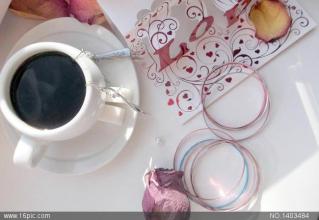What are the three primary coffee species?
Liberian species:
West Africa is the origin of coffee grown in Liberia. It has a strong ability to adapt to all kinds of environments, whether high or low temperature, humid or dry, except that it is not resistant to leaf rust and its flavor is worse than that of Arabica, so it is only traded in some West African countries (Libya, C ô te d'Ivoire, etc.). Or planted for research.
About 65% of the coffee in circulation in the world market is Alibika:
According to the statistics of ICO (International Coffee Organization), excluding the domestic transactions of coffee-producing countries, about 65% of the coffee in circulation in the world market is Arabica and 35% is robusta. Arabica species are characterized by slender and flat grains, while robusta coffee beans are more round.
But if you add in the hybrids of Arabica and robusta (for example, the mutant Colombian subspecies, which is the main variety of Colombian coffee, has a 1x4 robusta pedigree and is therefore resistant to leaf rust and has high yield) and its mutant secondary coffee beans, the classification will be more complicated. Some Arabica coffee beans are quite close to the native species, while others are similar to the Robusta species:
The leaf rust-resistant varieties found in Congo in Africa have stronger disease resistance than Arabica. In fact, the Robusta species was originally a mutant of the Congolese species.
Arabica coffee beans grow in the cold tropical high-sea areas, and the high-temperature and humid zone that is not suitable for Arabica coffee is where Robsta coffee grows. Robusta species are commonly used in instant coffee (which extracts about twice as much liquid as Arabica), bottled coffee, liquid coffee and other industrial coffees. The content of caffeine is about 3.2%, much higher than 1.5% of Arabica species.
The main producing countries are Indonesia, Vietnam and West Africa with C ô te d'Ivoire, Algeria and Angola as the center.
The origin of Arabica species is the Abyssinia Plateau of Ethiopia (now the Ethiopian Plateau). It developed the habit of baking and drinking in the 13th century and was introduced into Europe from the Arab region in the 16th century. it has become a favorite drink all over the world.
Arabica coffee accounts for 75% of all coffee, accounting for 80%. It has excellent flavor and aroma, making it the only coffee that can be drunk directly among these native species. But its resistance to dryness, frost, diseases and insect pests is too low, especially the natural enemy of coffee-leaf rust. Sri Lanka is a case in point. Sri Lanka used to be a well-known coffee producer, but coffee farms were not spared by leaf rust at the end of the 19th century. Since then, Sri Lanka has turned to the development of black tea industry, and the same list of black tea estates as India.
Arabica coffee beans are mainly grown in South America (except parts of Argentina and Brazil), Central America, Africa (Kenya, Ethiopia, etc.), Asia (including parts of Yemen, India and Papua New Guinea)

Important Notice :
前街咖啡 FrontStreet Coffee has moved to new addredd:
FrontStreet Coffee Address: 315,Donghua East Road,GuangZhou
Tel:020 38364473
- Prev

Environmental requirements for growing Coffee in Coffee Farm in India
Coffee planting conditions and distribution 1. What is coffee? Coffee (Coffee) is derived from the Latin word Coffea (biological word name) and belongs to a member of the Rubiaceae family. These plants are all woody plants, most of which are distributed in the tropics, with more than 500 classifications and about 6000 varieties. Most of the Coffea plants are tropical 5-6 meters high.
- Next

Boutique coffee Nicaraguan lemon tree manor
Nicaraguan boutique coffee has also become famous in recent years, of which the famous lemon tree manor (El Limoncillo) Pacamara honey treatment can make up for the vacancy of this post-processing method. Of course, the most proud thing about the manor is that they have a unique Java Nica, which tastes better than Java, and has the potential to catch up with Rosa and Pacamara.
Related
- Does Rose Summer choose Blue, Green or Red? Detailed explanation of Rose Summer Coffee plots and Classification in Panamanian Jade Manor
- What is the difference between the origin, producing area, processing plant, cooperative and manor of coffee beans?
- How fine does the espresso powder fit? how to grind the espresso?
- Sca coffee roasting degree color card coffee roasting degree 8 roasting color values what do you mean?
- The practice of lattes: how to make lattes at home
- Introduction to Indonesian Fine Coffee beans-- Java Coffee producing area of Indonesian Arabica Coffee
- How much will the flavor of light and medium roasted rose summer be expressed? What baking level is rose summer suitable for?
- Introduction to the characteristics of washing, sun-drying or wet-planing coffee commonly used in Mantenin, Indonesia
- Price characteristics of Arabica Coffee Bean Starbucks introduction to Manning Coffee Bean Taste producing area Variety Manor
- What is the authentic Yega flavor? What are the flavor characteristics of the really excellent Yejasuffi coffee beans?

